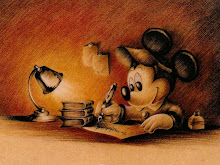 Crystal are believed to have the metaphysical powers of healing. This metaphysical healing relies on the innate powers of the healing crystals. The earliest records of crystal healing have been traced to ancient Egypt. India's Ayurvedic records and traditional Chinese medicine dating back as far as 5000 years ago also claim to use crystals for healing.
Crystal are believed to have the metaphysical powers of healing. This metaphysical healing relies on the innate powers of the healing crystals. The earliest records of crystal healing have been traced to ancient Egypt. India's Ayurvedic records and traditional Chinese medicine dating back as far as 5000 years ago also claim to use crystals for healing.Each crystal has a unique vibrational resonance. It owes its unique ability to the mineral content, geometry and the colour frequency it emits. The human body has a complex electromagnetic system, also known as a vibrational energy system. Nature has created crystals to become electromagnetic conductors which are capable of interacting with our electromagnetic system. Crystals have been found to carry vibration that activates certain energy centres within this system, thus creating a positive effect on the body.
In crystal healing, crystals must be placed on the Chakra points- the seven main points on the body, namely, the root Chakra(base of the spine), the navel, the heart, the throat, the third eye and the crown. Crystal healing helps identify the weak points in our body. A crystal healer will be able to observe the changes of colours of the crystals placed on your body, hence determining the part of your health that should be improved and how.

Some types of crystals and their health benefits:
Diamond- helps to increase personal clarity and trust. It also helps amplify thoughts and attitudes as well as promote spirituality and love.
Jade- has a connection to the kidney and nervous system. It helps promote knowledge and emotional balance.
Ruby- helps fight infections and cholesterol. It promotes blood cleansing and stimulate circulation.
My crystal healing experience...
I was asked to lie flat face up on a bed. For my body to interact with the crystals, I needed to be in a very relaxed state. Elaine Wong, a crystal healer advised me to close my eyes and take slow deep breaths while she places the crystals on my Chakra points. With the help of soft music in the background, I was able to relax went through the calming process of crystal healing.
When I regained full consciousness, Elaine pointed out my weaknesses, the part of my body that should be strengthened and how it can be done. She also suggested the types of crystals I should wear to help strengthen my weaknesses and spiritual health. As I left the room, I felt a sense of peace and unexplainable calmness of mind, body and soul. I am not sure whether it was the effect of the healing crystals or the fact that my body was totally relaxed for about an hour. However, one thing's for sure. The power of crystals still amazes me.

The process of forming a crystalline structure from a fluid or from materials dissolved in the fluid is often referred to as crystallization. In the ancient example referenced by the root meaning of the word crystal, water being cooled undergoes a phase change from liquid to solid beginning with small ice crystals that grow until they fuse, forming a polycrystalline structure. The physical properties of the ice depend on the size and arrangement of the individual crystals, or grains, and the same may be said of metals solidifying from a molten state.
Which crystal structure the fluid will form depends on the chemistry of the fluid, the conditions under which it is being solidified and also on the ambient pressure. While the cooling process usually results in the generation of a crystalline material, under certain conditions, the fluid may be frozen in a noncrystalline state. In most cases, this involves cooling the fluid so rapidly that atoms cannot travel to their lattice sites before they lose mobility. A noncrystalline material, which has no long-range order, is called an amorphous, vitreous or glassy material.


 ~Calcite, you will find by looking at the periodic table, is a calcium carbonate. Most people will know that calcium is the main constituent of the skeletal system, and therefore calcite is often used in crystal healing to help mend fractures of bones.
~Calcite, you will find by looking at the periodic table, is a calcium carbonate. Most people will know that calcium is the main constituent of the skeletal system, and therefore calcite is often used in crystal healing to help mend fractures of bones. ~Hematite, is an iron oxide. Iron helps to maintain healthy red corpuscles and oxygenate the blood, and hematite is frequently used to treat anaemia as well as circulatory problems.
~Hematite, is an iron oxide. Iron helps to maintain healthy red corpuscles and oxygenate the blood, and hematite is frequently used to treat anaemia as well as circulatory problems.
 ~Malachite, contains mainly copper, which draws off heat and can therefore be used to reduce inflammation. This is the idea behind the use of copper wrist bands to treat osteoarthritis.
~Malachite, contains mainly copper, which draws off heat and can therefore be used to reduce inflammation. This is the idea behind the use of copper wrist bands to treat osteoarthritis.

